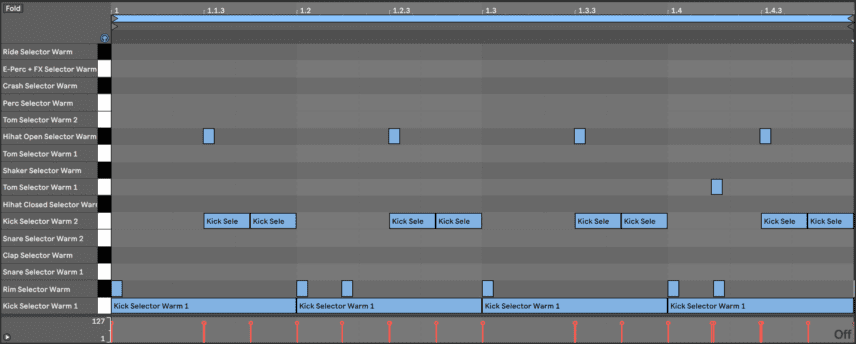In this instalment of Beat Dissected we’re going to create a techno beat influenced by Big Beat.
Beat Dissected is a regular series in which we deconstruct drum patterns, showing you how to program them in any DAW. Just copy our grid in your own software to recreate the loop.
Here’s the beat we’re building today:
Spec
Tempo
130 bpmSwing
50%Sounds
Selector Kit (Warm)Big Beat has its routes in London towards the tail end of the 1980s. However, it’s found a new home with some of the most current techno producers using techniques typical of the genre.
For this Beat Dissected we’ve chosen to deploy one of Ableton’s secret weapons: the Selector Kit (Warm edition). In short, it’s a Drum Rack but the design allows us to audition drum sounds with ease by turning the dial and testing another sound.
To enlarge any screenshot, just click on the image.

Step 1
The kick is a simple four-to-the-floor pattern and in this case, we’ve chosen sample 12 for its ‘woody’ attack.
The beauty of the Selector Kit is we can do all the processing inside the rack to speed up the production process. Once the settings are dialed in we can see how they sound on other available kit options. It’s easy to experiment and our aim when choosing and designing the sounds is for an urgent feel across the pattern with plenty of low-end.
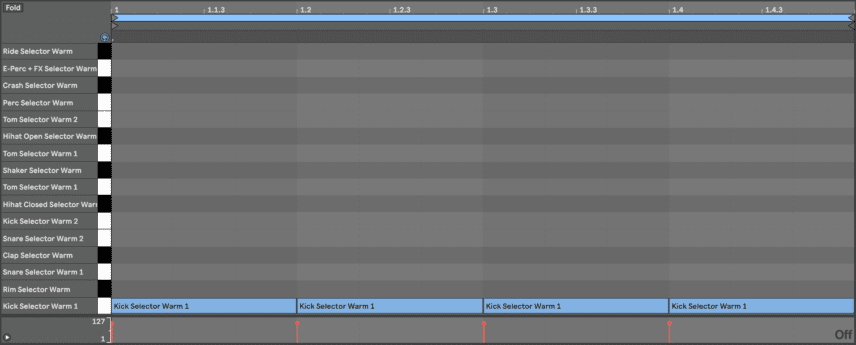
The unprocessed kick sounds solid except we’re looking to really push the low frequencies. To do so, we increase the Boom to 60, Drive to 10dB and Glue to 127. Turning down the Pitch to -6 semitones also helps the Boom hit that sweet spot. You’ll know it when you feel it.

Step 2
Let’s spice things up and generate a sense of urgency across the low frequencies by adding some off beat kicks. Sample 33 has a suitable transient since its dull attack provides a nice contrast to the lively sound from the kick in Step 1.
There’s a variety of possible positions we could try, each with their own unique character. In this instance, we simulated a heavy side chain action by filling the last two 16th notes of every beat.
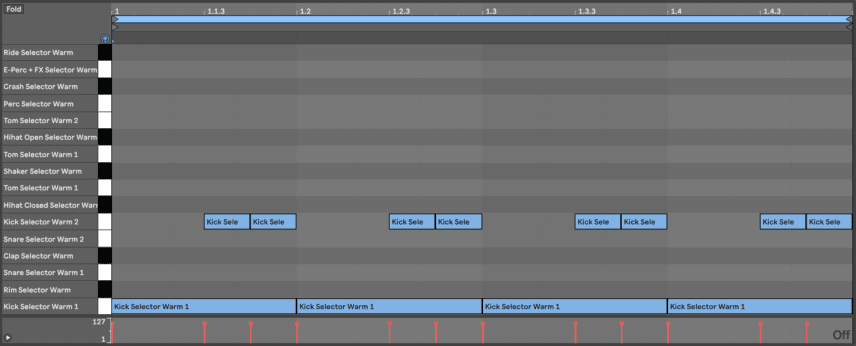
Once again we dived into those macros for lightning fast sound design. Pulling back the Drive to around 6dB and dropping the Pitch to -4 semitones helped settle the sound into the groove. Lowering the Volume to -10.0dB levels out the gain increase as a result of the drive we had earlier applied.

Step 3
For a final addition to the low end we’ve programmed an acoustic low tom. We place tom 55 on the second 16th of the fourth beat, but nudged it forward ever so slightly to further that sense of urgency we are looking for.
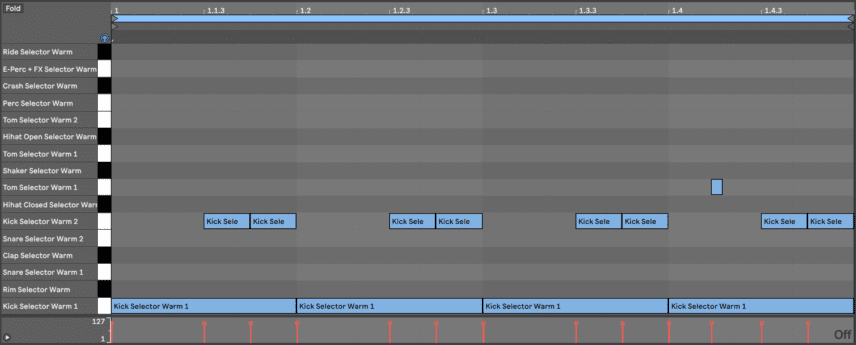
This tom sounded great however its long tail overwhelmed the groove. A quick chop did the trick, specifically, a 200-millisecond Decay worked well here. Reducing the Pitch by -3 semitones also made sure the sub worked that little bit harder.

Step 4
With the foundation now set, it’s time to work that high end. We reach for the Rim Selector, sample 24 was the best candidate. To begin with we layered this with the four-to-the-floor kick drum but also programmed additional hits on the second 16th note of beats two and four. For the additional hits, we nudged these forward slightly. No need to be a slave to the grid.
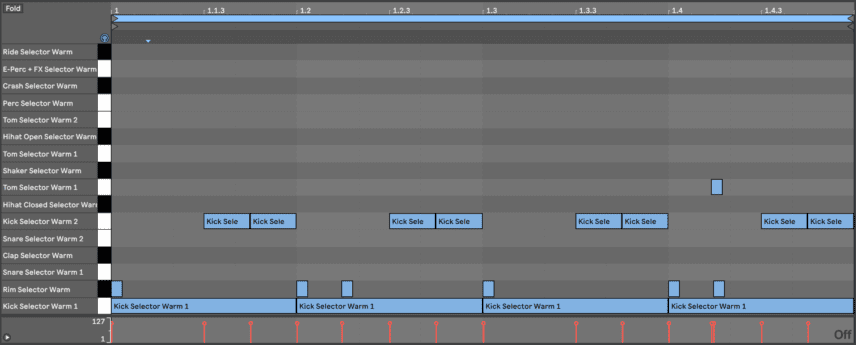
The processing on this step was to add 6dB of Drive, lower the Pitch -5 semitones and roll back the Volume to -8.0dB.

Step 5
The finishing touches included a simple hi-hat placed on the off beat, in our case sample 16 followed by gluing everything together with the Bass-Low Extender preset from The Glue compressor. We also snuck in a little delay by increasing the Echo Amount to 25 on the Selector Kit’s main macro settings.
